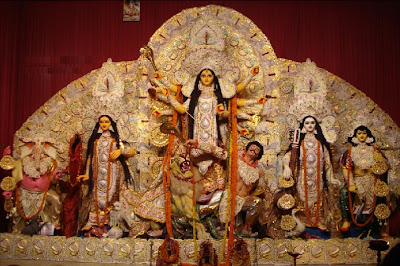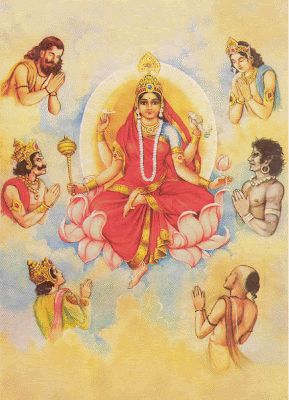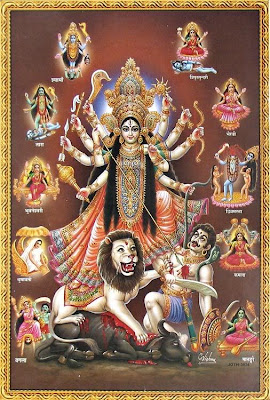Maha Navami, is the ninth day of the Shukla Paksha (waxing phase of moon) of Ashwin month. October 23, Tuesday is the day where this festival is celebrated. Mahanavami is the final day of Navratri Festival. Mahanavami is also the one before the last day of Durga Puja. This nine day festival is most significant festival in India celebrated by Hindus in India.
The Festival Maha Navami vary from region to region where when associated with rituals and celebrations. Maha Navami is determined as Ayudha Puja (Weapons puja). All books, utensils and gear are set aside for puja.
Maha Navami refers to final rituals related with Durga Puja. The Immersion of Durga Murti follows the next day. A major bhog is held on the day and Devotees offers Prasad to Goddess Durga. Food items which are prepared on this day for Goddess Durga will be shared by devotees.
The ritual, sacrifice of animal on this day in some parts of India is discouraged by many people nowadays and is banned by government. But in some rural regions of India is following this ritual in the famous temples of Goddess Durga.
Almost everywhere else but west Bengal, durgapuja means victory of Ram over Ravan. Ravan was killed by Ram on Vijayadashami and this is fabulously narrated through these Ramlilas, folk theatres.
Aparajita (Goddess Durga) is worshipped on this day, by offering her sugarcane stalks. Mahishasura Mardhini Puja is also observed on Mahanavami, Goddess Durga is decorated and worshipped in the form of Mahishasura Mardini alankaram. Matangi Dasamahavidya too, is worshipped on Mahanavami as a part of Dasamahavidya pooja in Navratri. Mukteshwari is the Goddess to be worshipped on mahanavami as part of Saptamatrika and Ashtamatrika puja. As per Hindu beliefs, Durga pooja on Maha Navami is alike to the Durga pooja performed on all nine days of Durga Navaratri.
On this day, Goddess Siddhidatri puja, is also performed, by the Navadurga Shakteya sampradaaya people. Kanya Puja is performed in Bihar, Kashmir, Punjab, Uttar Pradesh, Haryana and Bihar, when nine young virgin girls (kumarika), are worshipped, who symbolically represent the nine incarnations of the goddess Durga. Their feet are washed, kumkum applied on the forehead and they are feasted and given gifts and new clothes offered the devotees.
Nine Incarnations of Goddess Durga:-
1. Goddess Shailputri (Daughter of king of Mountains)
2. Goddess Brahmacharini
3. Goddess Chandraghanta
4. Goddess Kushmanda
5. Goddess Skandmata
6. Goddess Kaatyayani
7. Goddess Kaalratri
8. Goddess Mahagauri
9. Goddess Siddhidatri
The Nine Incarnations of Goddess Durga has very significant role during Navratri. Vijaya Dashami or Dussehra follows the next day of Mahanavami. One more festival is celebrated on this day, in some places of Telangana region of Andhra Pradesh, Bathukamma festival is celebrated.







